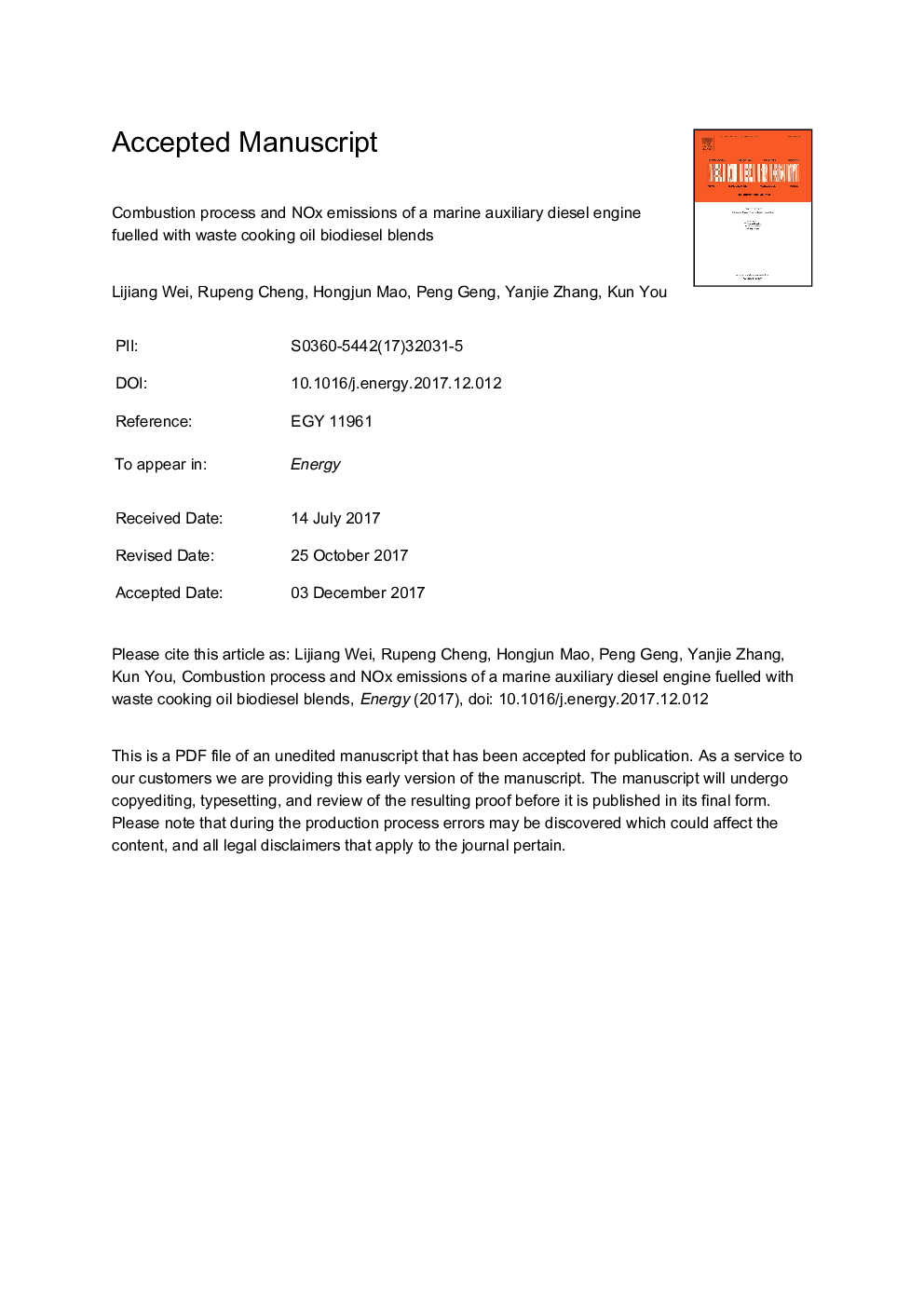| Article ID | Journal | Published Year | Pages | File Type |
|---|---|---|---|---|
| 8072300 | Energy | 2018 | 20 Pages |
Abstract
In order to reduce the harmful emissions from marine diesel engines, the use of alternative fuels is a promising option. In this study, the combustion process and NOx emissions and composition ratios of waste cooking oil biodiesel on a marine auxiliary diesel engine were investigated experimentally. Four different blended ratios of biodiesel and diesel were selected. The results showed that the peak of heat release rate (PHRR) decreased with the increasing biodiesel blended ratios at most of the operation conditions. The maximum reductions of PHRR were 11.04% and 19.86% at speeds of 1050Â rpm and 1500Â rpm. The brake specific fuel consumption (BSFC) increased but the brake thermal efficiency (BTE) changed little when the biodiesel blended ratio increased. The maximum increments of BSFC were reached at B50 and were 7.0%-8.3% and 5.1%-6.1% at 1050Â rpm and 1500Â rpm under different engine loads. With the increase of biodiesel blended ratios, NOx emissions decreased and NO2/NOx increased slowly due to the decline of in-cylinder temperature. While NO2/NOx decreased significantly with the increasing engine speed and load for the reduction of in-cylinder cooler regions. In general, the waste cooking oil biodiesel can be considered as an alternative fuel for marine auxiliary diesel engines.
Related Topics
Physical Sciences and Engineering
Energy
Energy (General)
Authors
Lijiang Wei, Rupeng Cheng, Hongjun Mao, Peng Geng, Yanjie Zhang, Kun You,
